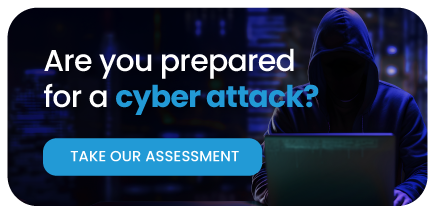Cybersecurity Risk Assessments
Identify vulnerabilities before threat actors can exploit them

Identify vulnerabilities before threat actors can exploit them
Cyber risks move at the same pace as your business—constantly and unpredictably. At BPM, we conduct comprehensive cybersecurity risk assessments that provide clarity about your security posture and actionable paths to improvement.
Our approach to risk assessments
We take a top-down, risk-based approach that aligns with your business objectives. Our assessments help you understand where you stand today and help you build a roadmap for a more secure future.
- Vulnerability identification: Our skilled team conducts thorough penetration tests that simulate real-world attacks, uncovering weaknesses before malicious actors can exploit them. We translate technical findings into business-focused recommendations with detailed remediation guidance to protect what matters most.
- Risk-based prioritization: We help you identify and focus on the threats that pose the greatest risk to your specific organization, leveraging key inputs such as likelihood and impact. This targeted approach allows you to allocate security resources where they’ll deliver the greatest impact.
- Continuous threat exposure management: Moving beyond point-in-time assessments, we implement a proactive approach that continuously monitors your environment for new vulnerabilities, allowing for swift prioritization and remediation.
Comprehensive cybersecurity risk assessment services
Penetration Testing
Our comprehensive testing reveals how attackers might identify, exploit, and chain together vulnerabilities in your infrastructure, applications and security controls for maximum impact.
Learn MoreRed Teaming
We simulate sophisticated attacks using tactics, techniques and procedures employed by real threat actors to test your detection and response capabilities; blending social engineering, technical, and at times physical vulnerabilities.
Learn MoreApplication/API Assessment
Our customized evaluations identify security flaws in your applications, APIs, development processes, and source code that could compromise data integrity or customer trust.
Learn MoreCloud Security Configuration
We collaboratively assess your cloud environments holistically to identify misconfigurations and security gaps that could expose your organization and data to unnecessary risk.
Learn MoreBuilding a security culture
Your employees represent both your greatest security asset and your most significant vulnerability. Our approach includes:
- Security awareness training customized to your organization, often with real examples drawn from recent security assessments
- Programs to build a culture where security becomes everyone’s responsibility
- Clear communication strategies that resonate with both technical teams and leadership
The BPM difference: Beyond standard assessments
When you work with BPM, you gain more than an assessment—you gain a partner committed to your security journey:
- Strategic alignment with your business goals, ensuring security enables growth
- Tailored engagements for all budgets
- Proactive identification of emerging threats before they impact your operations
- Clear communication that translates technical findings into business insights
- Scalable solutions that grow with your organization
- Collaborative approach that complements your existing capabilities
By partnering with BPM, you’re not just assessing your security posture at a fixed point-in-time – you’re building a foundation for long-term digital resilience. Together, we’ll create a security program that protects your assets today while preparing for the threats of tomorrow.
Meet our Cybersecurity Leaders
RELATED SERVICES
Start the conversation
Looking for a team who understands where you’re headed and how to help you get there? Whether you’re building something new, managing growth or preserving success, let’s talk.



